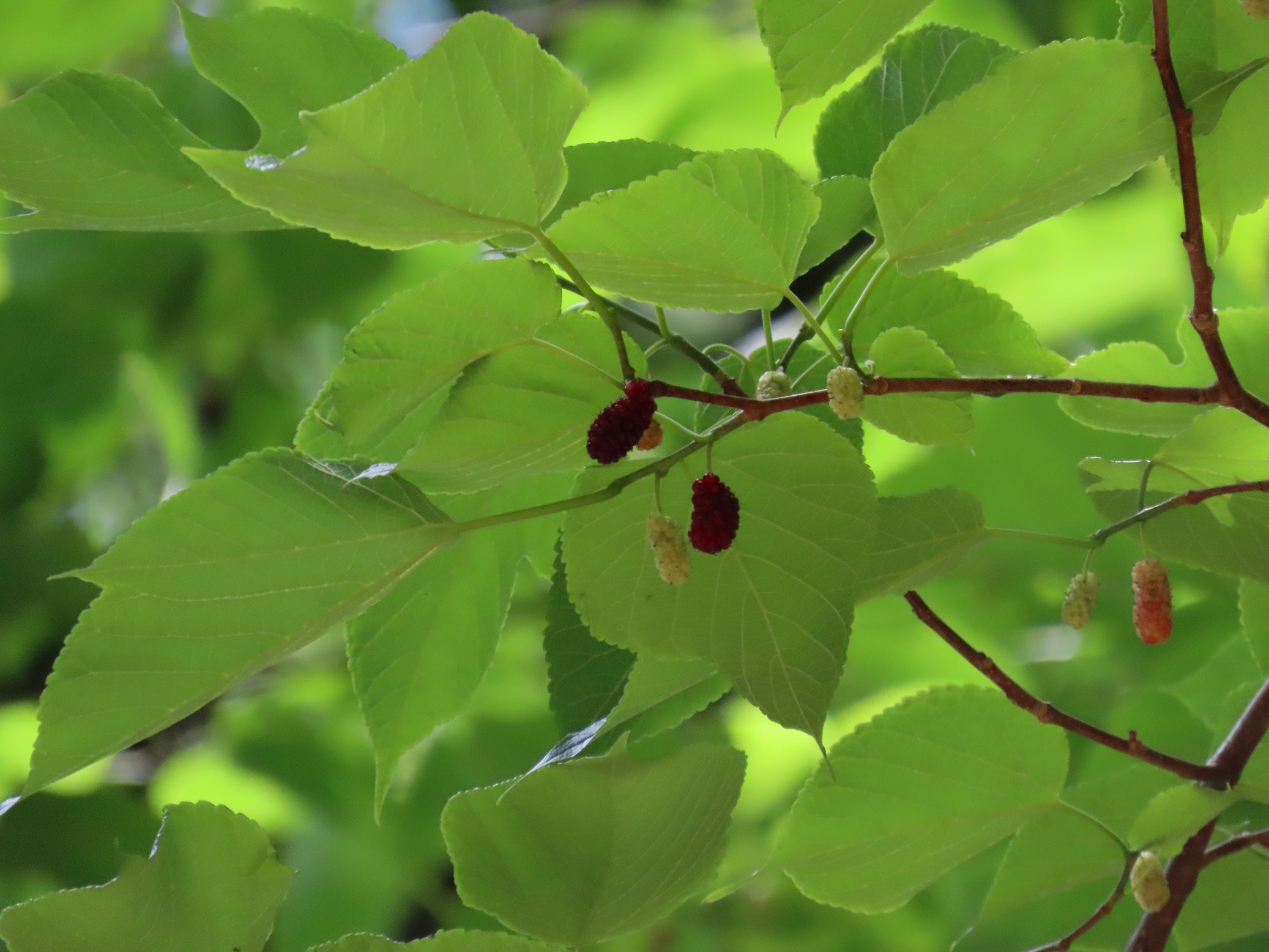
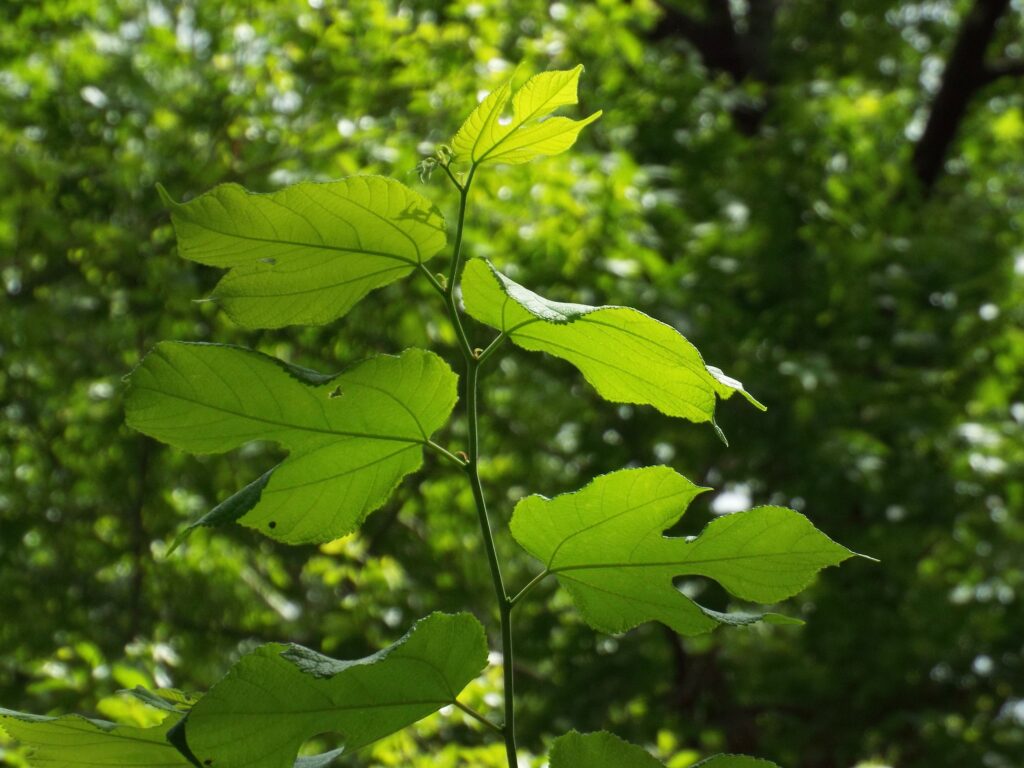
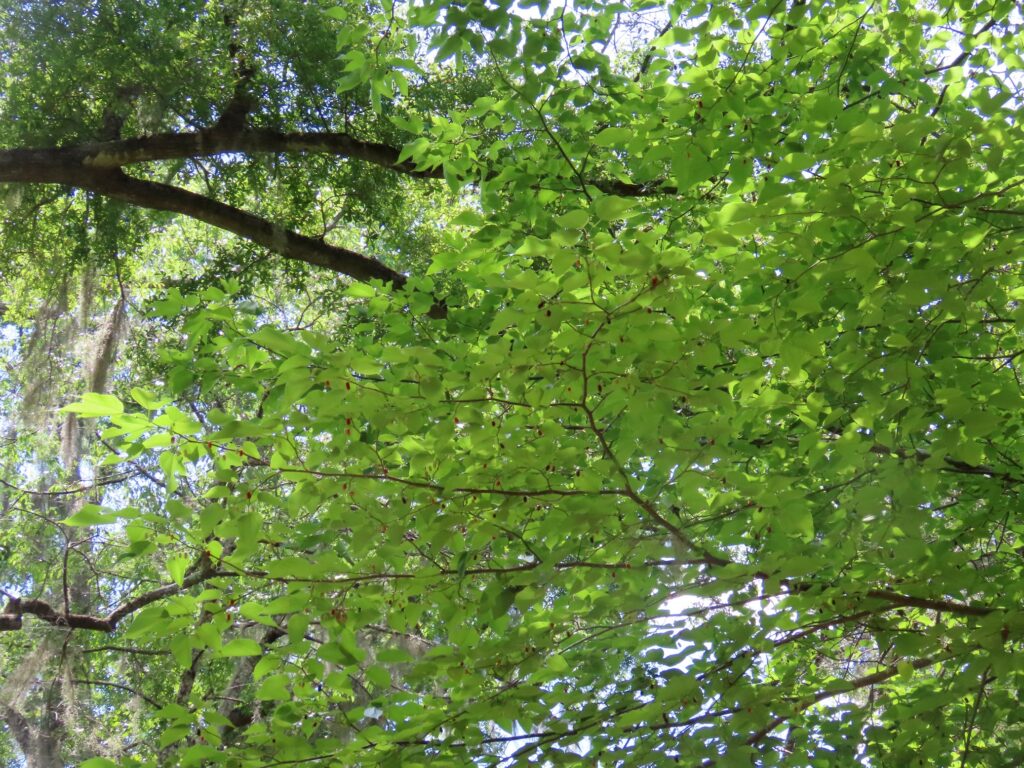
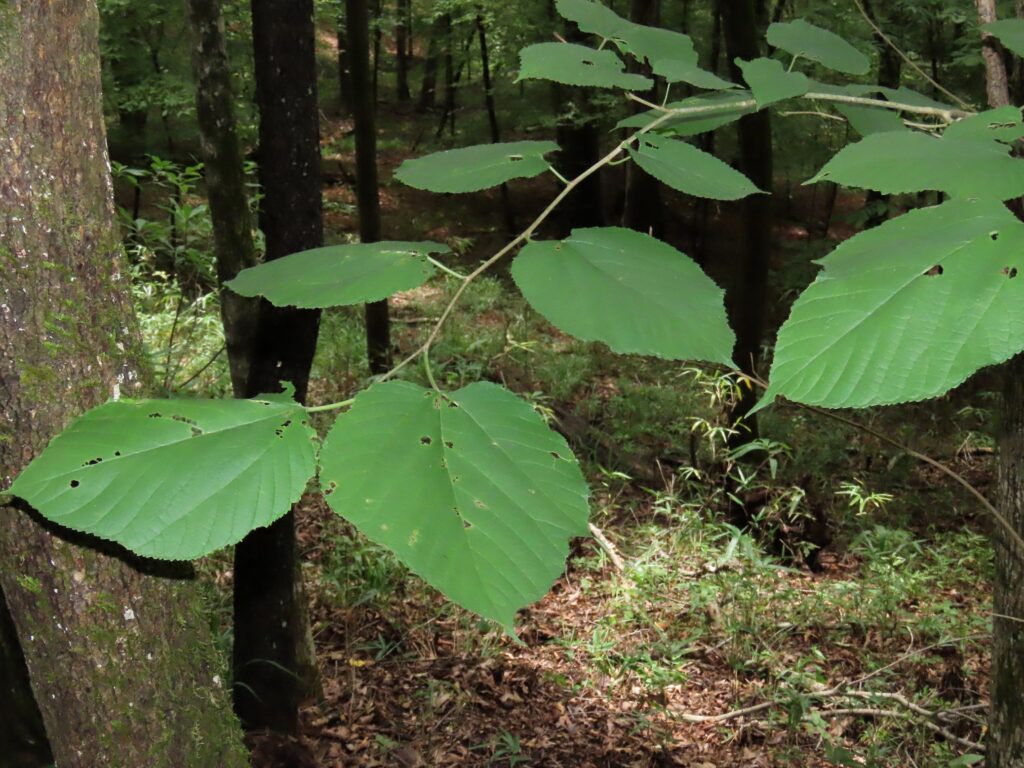
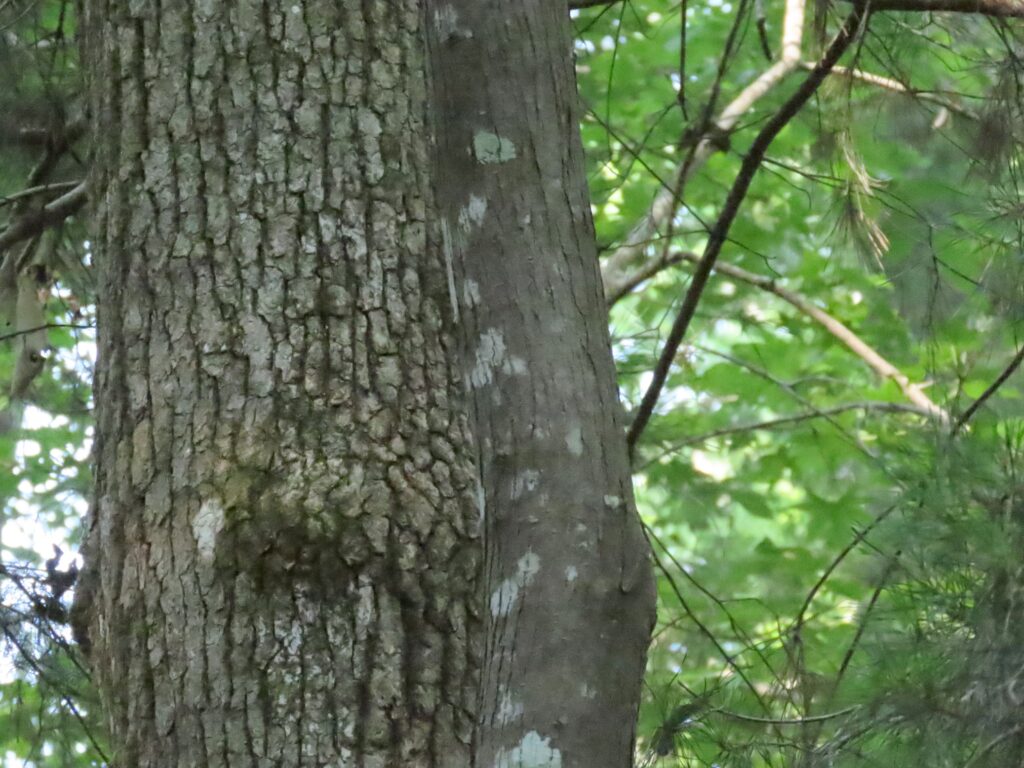
This week for Flora and Fauna Friday we look longingly towards the bountiful boughs of Red Mulberry (Morus rubra).
Red Mulberry is a small midstory tree found in forest understories throughout all of South Carolina and the Eastern United States. Here on the Sea Islands, I most often find it reaching about thirty feet in height, squarely within the midstory below a hardwood canopy, and growing on well-drained but moist and fertile upland soils. Its growth form is an umbrella, with long arching boughs towering and spreading upward into a dome-shaped canopy. Each sinuous limb holding aloft emerald-green leaves often as large as an outstretched hand. These leaves have a rough, scaborous texture on the hand, like sandpaper. Their shape is also highly variable. Red Mulberry leaves are trimorphic in nature, having three distinct shapes. They can either be a nearly circular swollen heart-shape with a small pointed tip, or instead a three-lobed form falling somewhere between the shape of a fleur-de-lis and a trident or, lastly, somewhere in between with the shape of an oven mitt. These trimorphic leaves are incredibly distinct and make Red Mulberry easy to identify in the wild. When its leaves are lacking in winter, that arching trunk and the rather smooth, finely fissured dull-gray bark gives this tree’s identity away to the perceptive naturalist. Yet, the most defining feature of Red Mulberry is its fruit.
In April, Red Mulberry begins to bloom with its small and pendulous pale-green catkins dangling from every leaf node down its limbs. These wind pollinated flowers are easy to miss and short lived. Once pollinated the flowers mature into a clustered fruit, similar in shape to an elongated raspberry or blackberry. Within the span of a few weeks these fruits rapidly ripen, turning from pastel-green to pink, then ruby-red, and eventually purple-black when fully ripe. These fruits are short lived on the limb and a favorite food of every animal in the forest. Red Mulberry fruits are plucked as fast as they can mature by every patrolling songbird. The few that mature and make it to the ground are soundly sucked down by any passing quail, turkey, turtle, deer, fox, squirrel, opossum, or raccoon that chances upon them. Red Mulberries are a tremendous spring food source for practically every forest creature. These fruits are edible for humans as well and apparently quite good. However, I can’t personally provide commentary myself. Despite having a Red Mulberry tree in my own yard, I’ve never once eaten a fruit off of it. The critters never leave me any to try!
We have a second species of Mulberry here in the Lowcountry as well, the White Mulberry (Morus alba) which is an exotic species introduced from Europe. It’s easily told apart by from Red Mulberry by its leaves, which are a bit smaller, smooth to the touch, and in their lobed forms take on a more fig-like appearance. Its bark is usually paler and its fruit more variable in color once mature, averaging more towards a pale-red. White Mulberry is most often found in urban areas and the margins of major highways and railroads, where it has escaped from yards and gardens thanks to birds spreading its seeds. White Mulberry can become invasive in areas of high disturbance with little natural habitat. Yet I rarely see it causing issue in wild areas of the Lowcountry. It more so fills a void left in the wake of industry and sprawl.